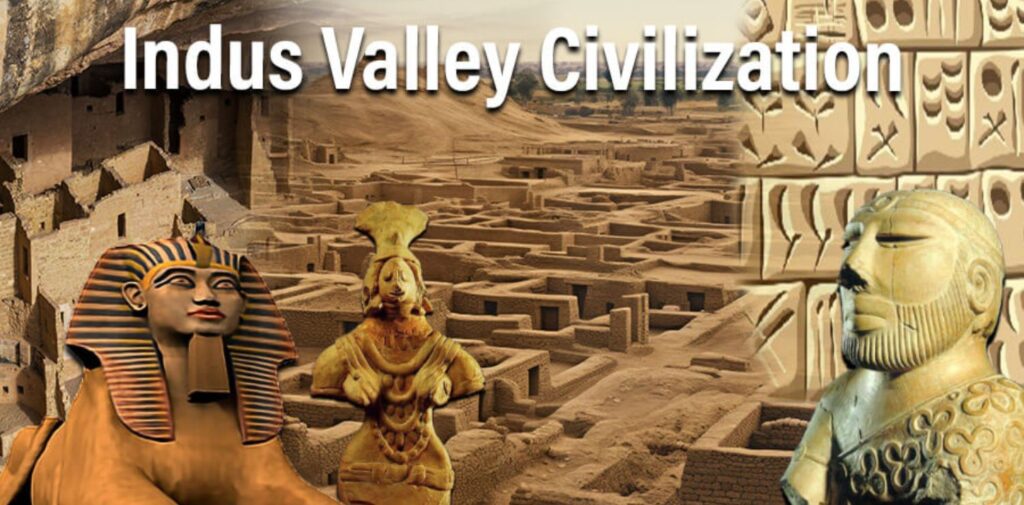The cities of Mohenjo-Daro and Harappa, which are part of the ancient Indus Valley Civilization, are some of the most fascinating examples of Ancient Indian Urban Planning. These cities, located in present-day Pakistan and India, were built more than 4,000 years ago, and they provide us with a glimpse into the advanced knowledge of city design and construction that people had at that time.
The Rise of the Indus Valley Civilization
The Indus Valley Civilization is one of the oldest civilizations in human history, alongside Mesopotamia and Ancient Egypt. It flourished around 2500 BCE and lasted for about 700 years. The civilization covered a large area that stretched from modern-day Pakistan to parts of India and Afghanistan. Among its many cities, Mohenjo-Daro and Harappa were the most important and are best known for their sophisticated urban planning.
What makes these cities special is their highly organized layout, advanced drainage systems, and carefully designed buildings. The people of Mohenjo-Daro and Harappa were skilled engineers and urban planners who paid close attention to hygiene, safety, and functionality.

City Layout and Organization
When you look at the cities of Mohenjo-Daro and Harappa, the first thing that stands out is their organized street grid. Both cities were carefully planned, with streets running in straight lines, intersecting at right angles. This created a well-organized and easy-to-navigate layout, unlike many modern cities that grow in a more haphazard manner.
In Mohenjo-Daro, the city was divided into two main sections: the Citadel and the Lower Town. The Citadel was a raised area that contained important public buildings, including a large bath, possibly for religious or ritualistic purposes. The Lower Town, where the common people lived, had narrow streets and houses, but even here, the planning was remarkable. The buildings were mostly made of brick, and many of them had their own private wells, showcasing a high level of attention to water supply.
Harappa, like Mohenjo-Daro, was laid out in a grid pattern with streets running from north to south and east to west. The city had two main parts: the Citadel and the lower residential areas. The houses in both cities were built using standardized brick sizes, suggesting a high level of organization and uniformity. This careful planning indicates that the people of Harappa and Mohenjo-Daro had a clear understanding of how to build efficient cities.
Drainage and Water Supply
One of the most impressive aspects of the urban planning in Mohenjo-Daro and Harappa is the advanced drainage systems. In both cities, streets were equipped with drains made of brick, and many houses had their own private toilets connected to the city’s sewer system. This is something that most ancient civilizations did not have, and it speaks to the high level of sanitation and cleanliness the people of the Indus Valley valued.
The drainage system was designed to carry waste and rainwater away from the city, preventing flooding and maintaining hygiene. The drains were covered with stones or bricks and were connected to larger drainage channels, which emptied into nearby rivers. This kind of advanced sewer system was centuries ahead of its time.
The cities also had a sophisticated water supply system. Wells were built in many houses, and public wells were spread throughout the cities. The people of Mohenjo-Daro and Harappa understood the importance of clean water for drinking, cooking, and washing. They also had a variety of reservoirs and tanks that were used to store water, ensuring that the city always had a reliable water supply, even during dry seasons.

Residential Planning and Houses
The houses in Mohenjo-Daro and Harappa were made primarily of baked brick, which was both durable and effective for the hot climate. The houses were typically single or double-story, with flat roofs. Many houses had courtyards in the center, where people could gather and keep animals. These homes were arranged in neat rows along the streets, creating a uniform appearance throughout the city.
Inside the houses, the people had separate rooms for different purposes. Some rooms were used for sleeping, others for cooking, and some may have been used for storage or for working. There were also private wells in many homes, which was a significant luxury at the time. These well-planned homes ensured that the residents lived in comfort and had access to the basic necessities of life.
The homes were often well-ventilated, with windows that allowed fresh air to circulate. This was important for maintaining a cool indoor environment, especially during the hot summers of the Indus Valley region.
Public Buildings and Bathing Areas
Both Mohenjo-Daro and Harappa had public buildings and communal spaces. One of the most famous features of Mohenjo-Daro is the Great Bath. This large, public bath was made of carefully fitted bricks and was probably used for religious or ceremonial purposes. The bath was built with a water-tight design, allowing it to hold water for long periods. It was likely a symbol of the advanced engineering skills of the Indus Valley people and their understanding of water management.
In addition to the Great Bath, there were other public buildings in Mohenjo-Daro, including large granaries that were used for storing grain. These buildings suggest that the people of the Indus Valley were involved in trade and agriculture on a large scale. The cities of Mohenjo-Daro and Harappa were thriving centers of commerce, and the public buildings reflect the wealth and importance of these cities.
The Importance of Trade and Economy
The economy of Mohenjo-Daro and Harappa was largely based on trade, agriculture, and crafts. The cities were connected by a network of trade routes that extended to Mesopotamia, the Persian Gulf, and Central Asia. Archaeological evidence suggests that the people of the Indus Valley traded goods such as cotton, pottery, beads, and metals. The presence of standardized weights and measures also indicates that trade was organized and efficient.
The agricultural activities around these cities were also highly advanced. The people of Mohenjo-Daro and Harappa grew wheat, barley, and other crops, and they had sophisticated irrigation systems that allowed them to water their fields even during dry periods.

Decline of the Indus Valley Civilization
Despite the remarkable achievements of Mohenjo-Daro and Harappa, the Indus Valley Civilization eventually declined around 1900 BCE. The exact reasons for the decline are still unclear, but there are several theories. Some scholars suggest that climate change, including a shift in the course of the Indus River, may have disrupted agriculture and trade. Others believe that invasions or internal conflicts could have played a role in the downfall of the civilization.
While the cities of Mohenjo-Daro and Harappa were abandoned, their legacy lives on. The urban planning, drainage systems, and water supply systems of these cities are still admired today for their ingenuity and foresight.
Conclusion: Ancient Indian Urban Planning
The cities of Mohenjo-Daro and Harappa offer us a glimpse into the advanced urban planning of an ancient civilization. The careful organization of the streets, the sophisticated drainage and water systems, and the well-planned homes and public buildings show that the people of the Indus Valley were ahead of their time. Their cities were clean, organized, and functional, reflecting a deep understanding of urban life and the importance of hygiene, safety, and community.
Even though the Indus Valley Civilization eventually declined, the cities of Mohenjo-Daro and Harappa remain symbols of ancient urban planning and engineering. Their achievements continue to inspire architects, engineers, and historians today, reminding us of the ingenuity of the people who lived in the Indus Valley over 4,000 years ago.




